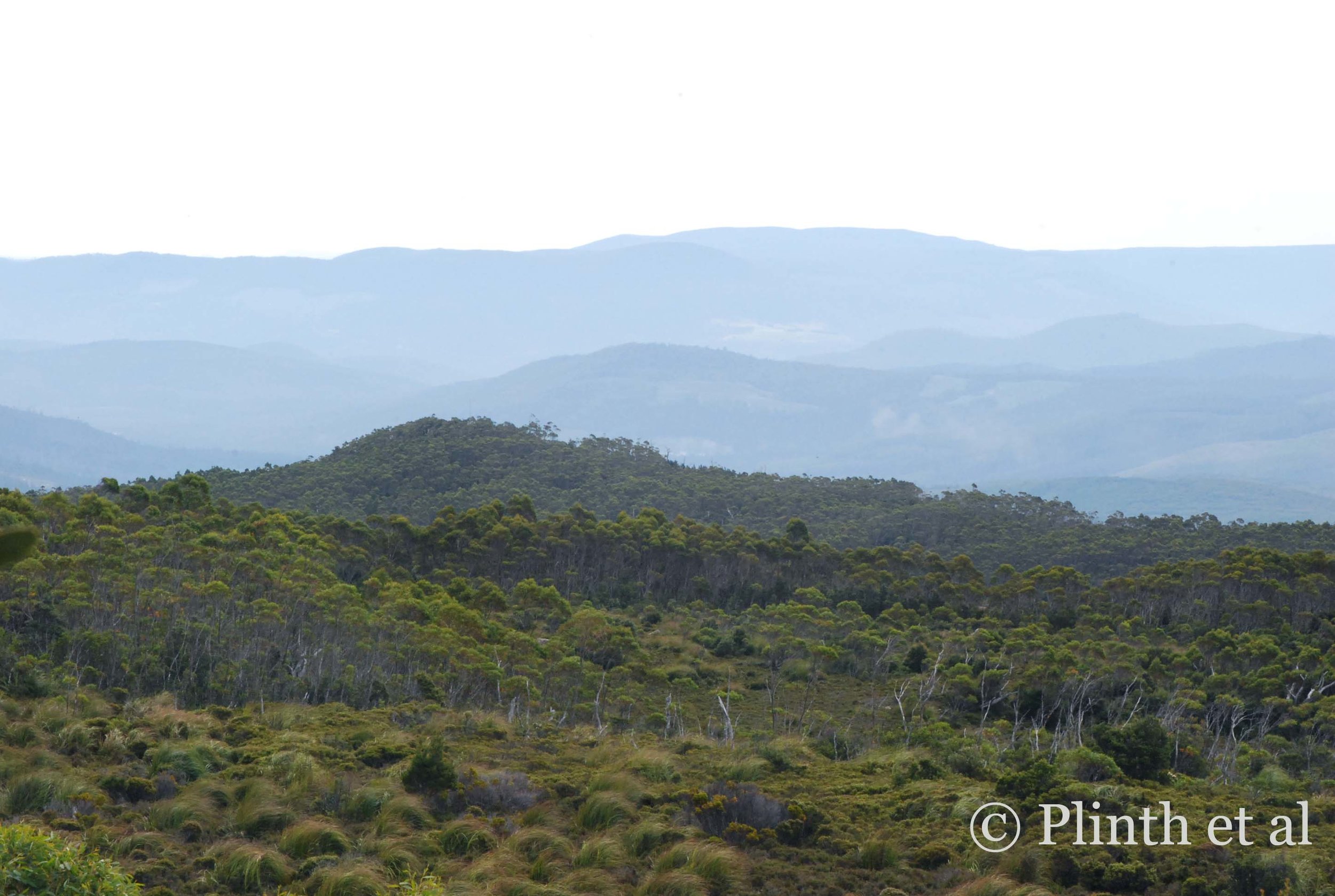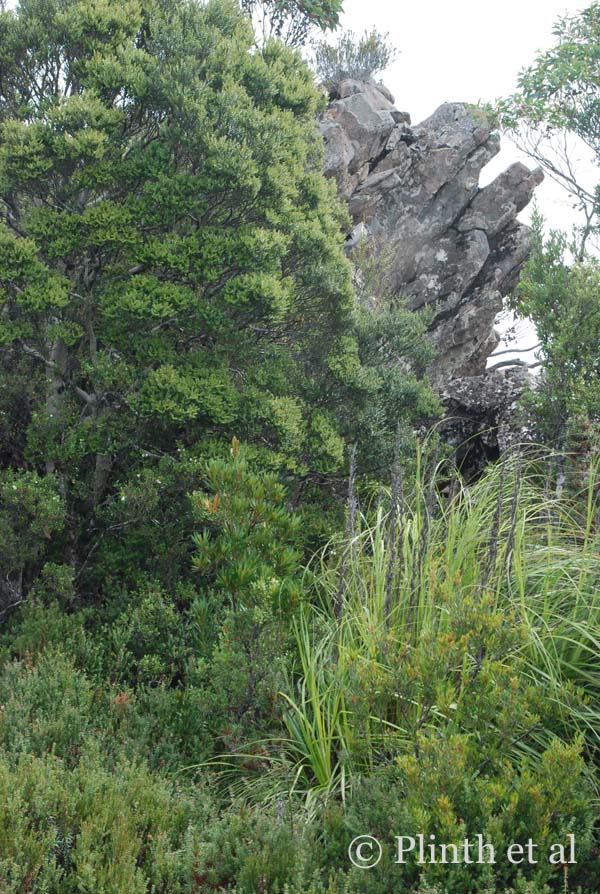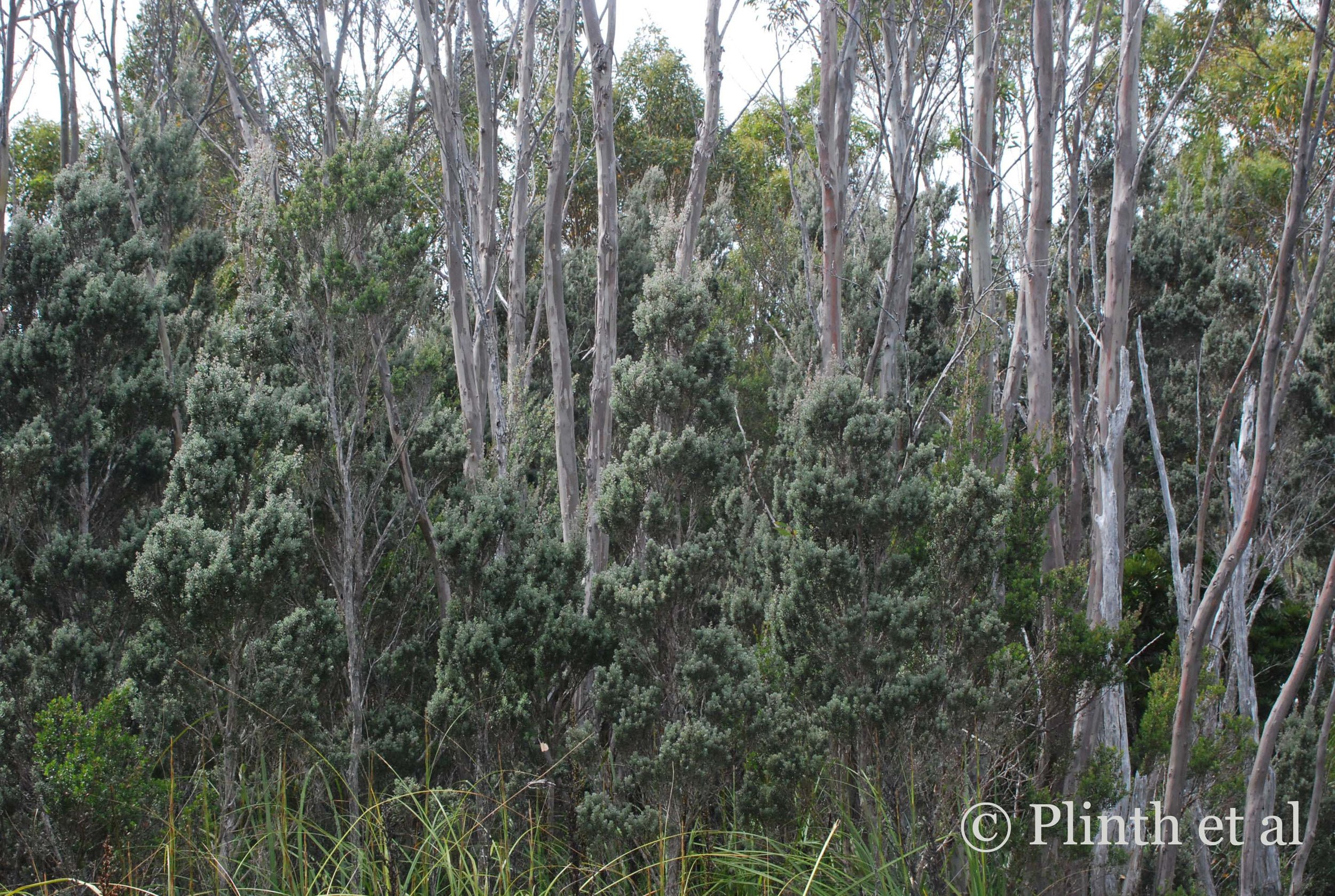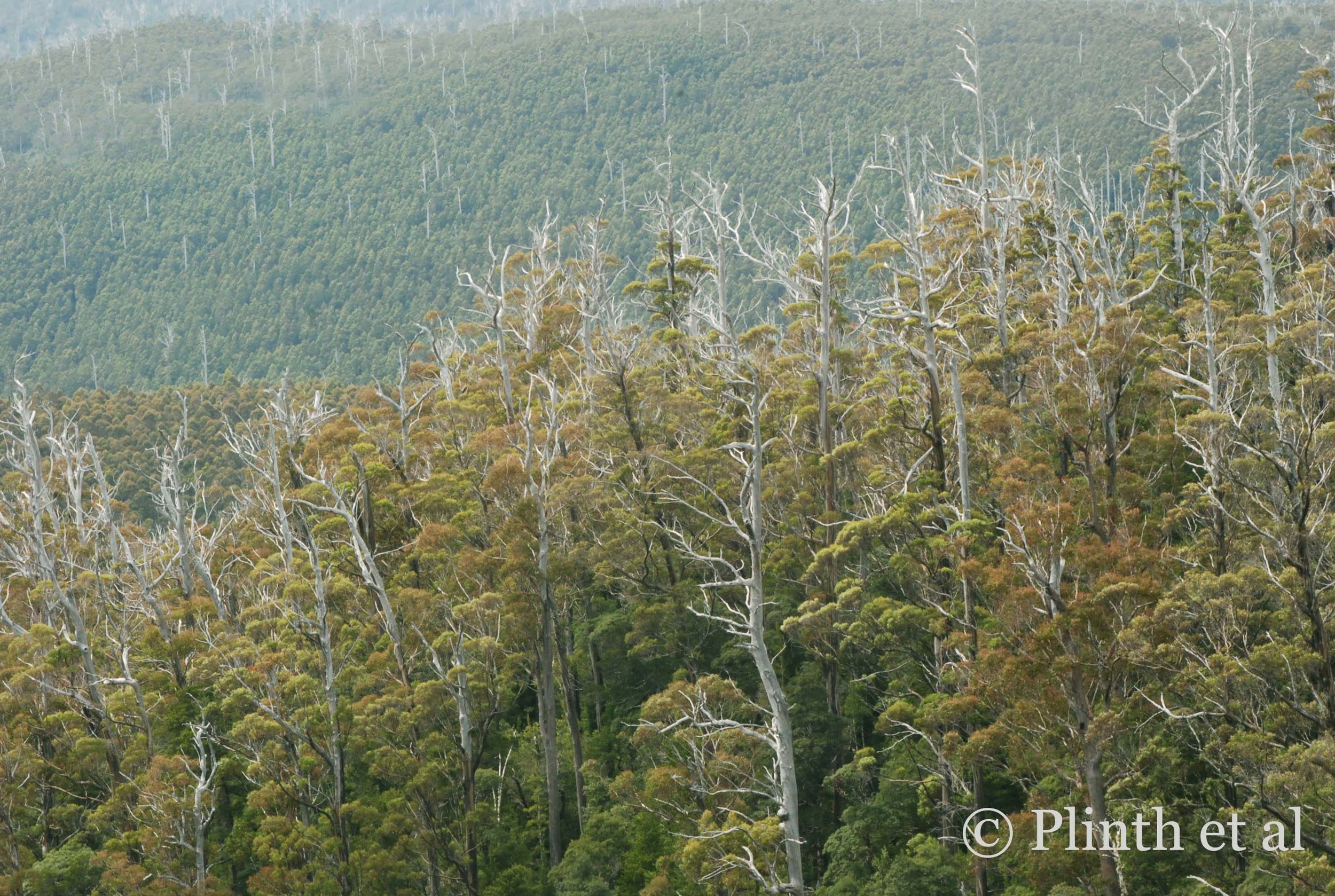Inspiring Tasmanian Plant Vignettes
Sometimes the best antidote to the artifice of gardens is an excursion to a natural area where the human influence is minimal or nonexistent. Wild plant communities can humbly demonstrate how plants coexist together and how they can be interpreted for gardens. Surprisingly they can reflect the principles of planting design well. It was a point driven again during my recent forays in Tasmania, Australia.

My friend and I decided to visit the Hartz Mountains in southwest Tasmania, Australia to see the leatherwoods (Eucryphia lucida and E. milliganii) flowering, and the weather was astonishingly cooperative as it was warm and sunny (my last visit several years was marked by high winds and lashing rainfall). Named after the German mountain ranges, the Hartz Mountains are recognized as a National Park designed as a World Heritage Wilderness Area. The mountains are a good 2 hour-drive from Hobart, Tasmania's capital city, making for a good day's trip. They contain varied habitats ranging from moist temperate rainforests to subalpine forests. The oft said expression 'nature does it better' is exemplified in the various plant communities we admired in the subalpine forest. Everywhere nature had created these gardensque vignettes that we could not help study.
In some areas, different shrubs covered the ground thickly, forming interesting assemblages of foliage, fruit, and flowers that we often strive to replicate in our gardens. Here Telopea truncata (Tasmanian waratah) breaks up the fine small-leafed shrubs, which include Eucryphia milliganii (dwarf leatherwood), Leptecophylla juniperina (cheeseberry), and Richea scoparia (honey richea). Such textural interplay is crucial for all-season interest.
The weathered trunk of a deceased Athrotaxis selaginoides (King Billy pine) is a strong focal point, a silver foil against the yellow and greens of the vegetation while the arching blades of Gahnia grandis (saw sedge grass) reinforces the trunk's sinuous shape. The vibrant green of Cenarrhenes nitida is a textural and chromatic transition between Gahnia and Orites acicularis (yellow bush) through its foliar color of the former and its whorl-like leaves of the latter. Flowers are simply superfluous.
Just as we may place an agave or yucca to define a garden, the Richea pandanifolia performs a similar function in this landscape through its visual distinctiveness. Gahnia grandis reads as a vertical form, lending a fluid coarseness different from the Richea.
Glacial activity had spewed and deposited rocks of immense sizes and asymmetrical shapes throughout the landscape. These rocks are natural backdrops for the vegetation, such as one of Nothofagus cunninghamii (myrtle beech) and Gahnia grandis (saw grass sedge).
The silvery new growth of Leptospermum lanigerum (woolly tea-tree) were emerging, and related well to the mottled trunks of Eucalyptus coccifera (Tasmanian snow gum). Imagine translating this combination in the Northern Hemisphere - silver birches (Betula pendula or B. utilis var. jacquemontii) could stand in for the eucalypts and phillyreas (P. latifolia and P. angustifolia) and Elaeagnus 'Quicksilver' for the woolly tea-trees.
However, nothing can replicate the awe inspiring view of the eucalypt forests from the mountains. This view is one reason why nature will always offer more visually than we can give or take from it.
~Eric













